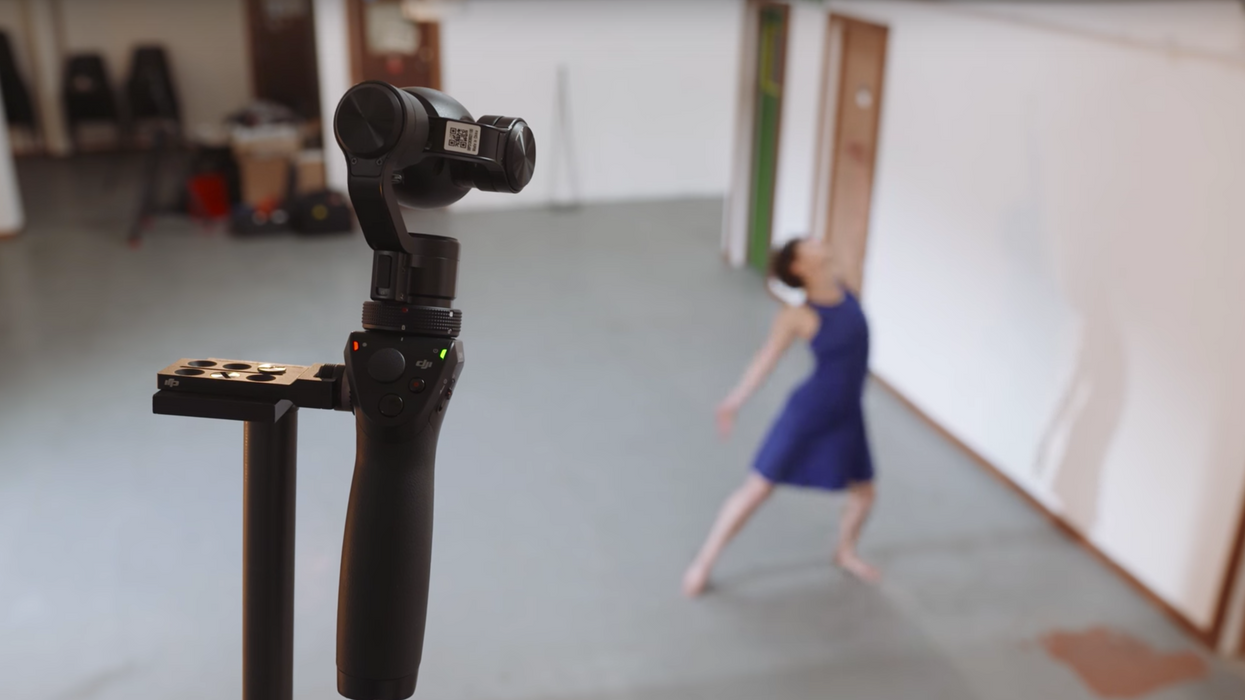A New Acrobatic Camera and Lighting Platform from the Cinematographer of '24'
The Charters Pole is a camera platform without the noise or injury risk of a drone.

As cinema cameras get smaller and smaller, more options for rigging them in surprising ways become available. While sticking a camera at the end of a stick isn't a new idea, cinematographer Rodney Charters has developed a professional-quality tool that you can be confident will keep your camera in place (if you use it properly, that is).
Meet the new Charters Pole, a 20-foot-long extendable pole designed to allow filmmakers a wider variety of angles.
Teaming up with the manufacturer Genus Tech, Charters, best known for his cinematography on 24, among many other productions, has designed a tool intended for reliable use in a variety of production situations. The pole has interchangeable 1/4-20 and 3/8" thread mounts for larger and medium camera bodies, carbon fiber tube construction for high strength and a low weight, and secure fastening at every level.
Using a pole avoids the noise and danger that are part and parcel with drone cinematography.
While many comparable shots could be accomplished with a drone—especially overhead shots of crowds—using a pole avoids the noise and danger that are part and parcel with drone cinematography.
As you may note in many of the press photos, most of the focus is on use in combination with some sort of gyro-stabilized camera, like the Osmo system from DJI. This makes sense, given that even a perfectly operated pole shot will have some vibration that would require stabilization. Fortunately, initial demonstration shots don't show much pole wiggle. Outside on a windy day, however, you'll likely see more of the side-to-side sway common with long pole runs.
The Charters can also be used as a long sound boom or for lighting.
The camerawork isn't the only focus, of course—the Charters can also be used as a long sound boom or for lighting. In fact, lighting is where this device will see a lot of use, since filmmakers are already constantly rigging long pieces of speed rail together or taking a single piece of 10x10 frame and making long lighting arms with it. Combined with a china ball or lightweight LED, you have a versatile tool for lighting your long night exterior walk and talk.

As is the case for all tools on a film set, safety should always be considered first and foremost. While the Charters is carbon fiber, which feels more like non-conductive plastic than metal, it does actually conduct electricity. Be extra cautious when operating around power lines; fully extended, it could easily hit a power cable and injure or kill an operator. In addition, stay on the lookout for other interference, since getting the top end caught in a spinning fan could turn the bottom into a projectile. With some reasonable caution, however, the Charters should be able to be used safely.
The Charters is available now directly from Genus Tech for $549.95.
Tech Specs
- Carbon Fibers
- 6 meters (19.6 feet) long full extended
- 1-meter length, fully closed
- 7 stages
- 1/4"-20 and 3/8" thread, adjustable thread extension length
- Ball mount for accessories











